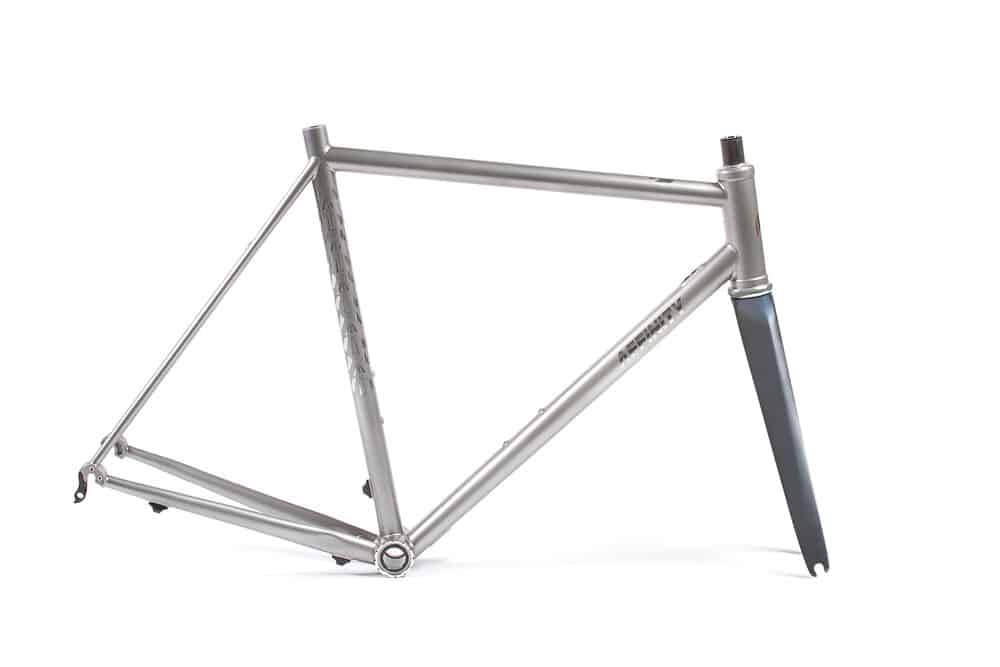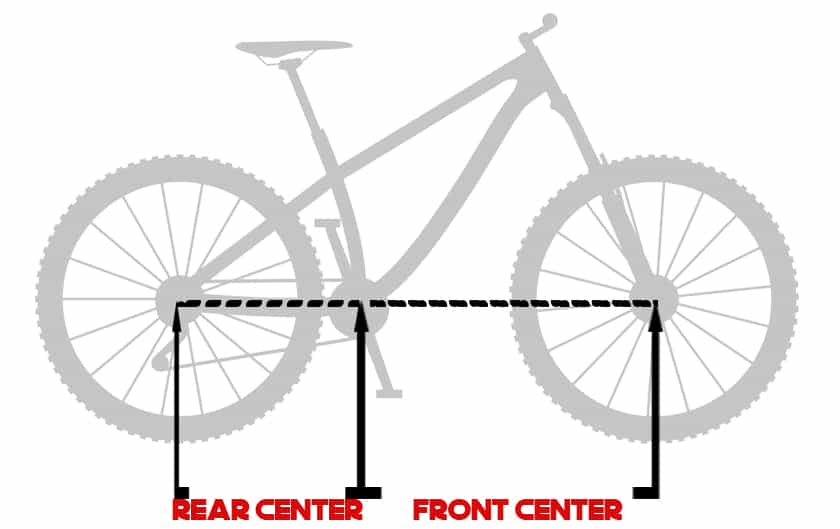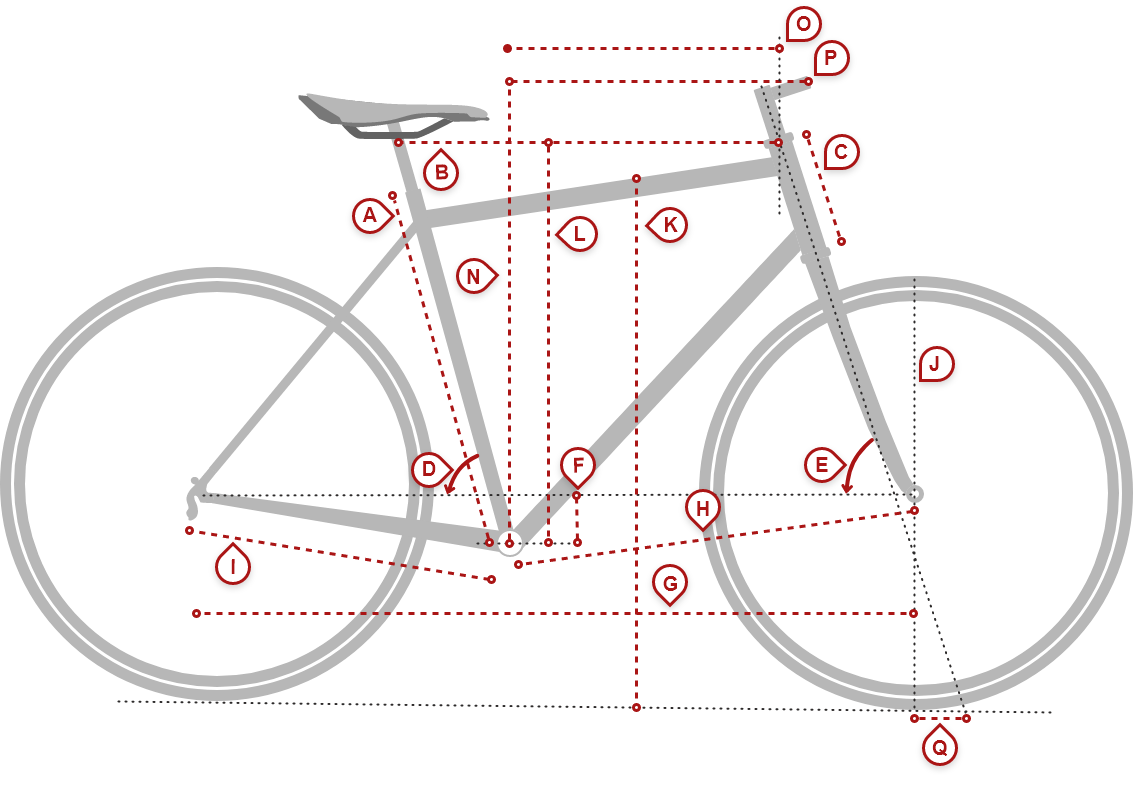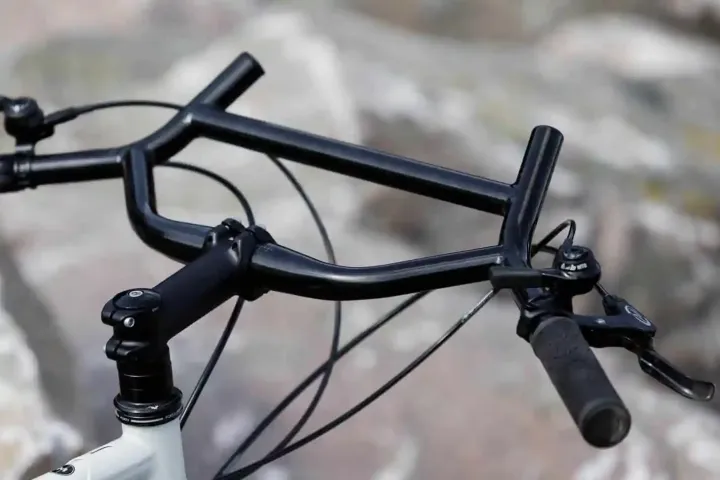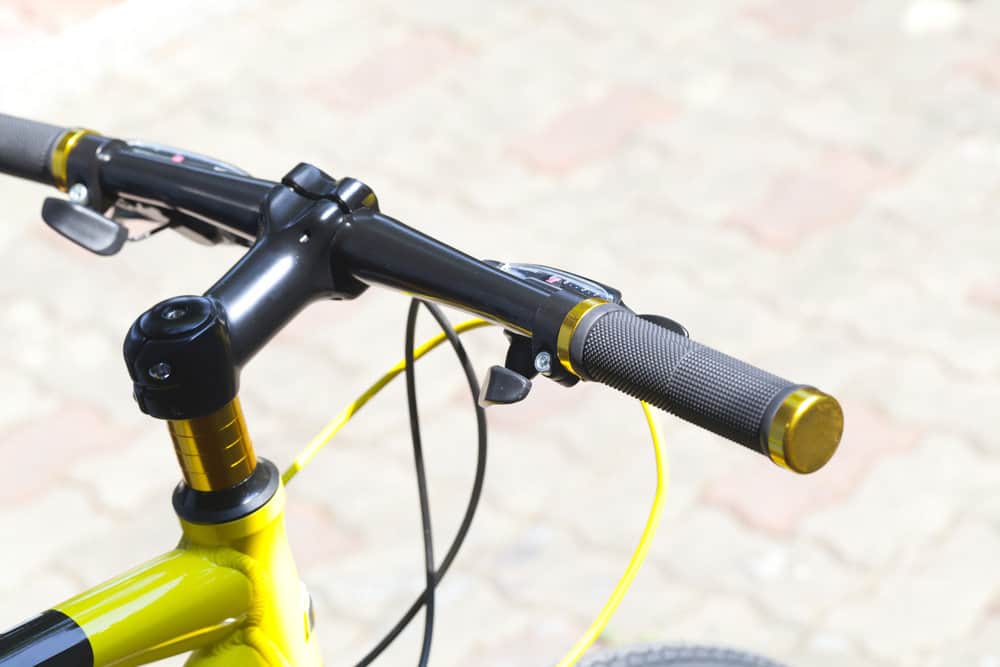It is always a hectic task to choose between two bikes with indistinguishable appearances, especially when you are unaware of the purpose they are designed for. Tour bikes and road bikes undeniably fall under this category, considering how identical their frame structure is.
When I was a beginner who decided to buy a new bike from a bike shop, I could not differentiate between both these types. Now that I have gained experience, I can realize how these two bikes offer plenty of differences.
Fortunately, you do not have to ride them both to know how they differ. This detailed guide will help you understand the features that make these bikes similar yet distinct from each other. Let’s start by understanding what tour bikes and road bikes are.
Bikesolved.com is readers supported, you may find Amazon affiliated links on this page, that pays us commission for recommending products at no extra cost to you.
What are tour bikes?
A touring bike is a stiff bike explicitly designed for tours and adventures. It allows you to take up multi-day rides where you pedal for days without any hassle. From food to clothes, touring bikes will enable you to carry all your essentials. They are known for bearing weight and going as far as you wish to go.
Moreover, they offer versatility as you can also use them for commuting and casual rides. The longer wheelbase and chainstays of a tour bike allow you to ride comfortably while you take up long trips. Its frame may feel much heavier than other bikes, but it promises durability and works best for full-day rides that require you to carry your essentials along.
Key features:
- Equipped with wide tires
- Heavy and durable bike frame
- Encourages a relaxed and upright riding position
- Longer wheelbase
- Heavy-duty steel or aluminum frame
What are road bikes?
Road bikes are ultralight bikes with narrow tires that focus on maximizing speed. Their frame is designed to travel across smooth surfaces and pavements. Unlike a tour bike, they possess a shorter wheelbase. A road bike encourages an aerodynamic position while riding and offers several gears for excellent performance.
You will not find it as versatile as a tour bike, but its lightweight frame allows you to ride faster with less effort. When it comes to cycling on paved city roads or casually commuting around the town, the slick tires of a road bike offer great acceleration.
Key features:
- Equipped with narrow tires
- A lightweight frame that reduces pedaling efforts
- Encourages a front-leaning posture
- A shorter distance between the front and rear wheels
- Carbon fiber frame
Tour Bikes Vs Road Bikes
| Feature | Tour Bike | Commuter Bike |
|---|---|---|
| Geometry and Comfort | Upright and comfortable for long rides | Upright and comfortable for daily use |
| Frame | Sturdy and durable | Durable and lightweight |
| Wheelbase | Long for stability and control | Intermediate for maneuverability |
| Tires | Wide and durable for rough terrain | Smooth and puncture-resistant for city roads |
| Chainstay | Long for stability and carrying heavy loads | Intermediate for agility and responsiveness |
| Weight and Speed | Heavy and slow for touring and carrying gear | Light and fast for daily commuting |
| Handlebars | Upright for comfort and control | Upright or slightly angled for comfort and control |
| Purpose | Long-distance touring | Everyday transportation |
| Accessories | Racks, panniers, and other attachments for carrying gear | Fenders, lights, and other accessories for urban commuting |
| Brakes | Robust and reliable for heavy loads and long descents | Reliable and easy to use in traffic |
| Gear Shifters | Multiple gears for climbing hills and carrying heavy loads | Multiple gears for varying terrain and loads |
Geometry and comfort
The geometry and overall structure of a touring bike are very different from that of a road bike. A touring bike offers a relaxed geometry where you can ride comfortably with a straight back. This is due to the long hours you have to pedal for.
An uncomfortable seating posture cannot work when your purpose is to go on all-day trips. You will notice that the chainstay and wheelbase of tour bikes are much longer when compared to road bikes. Unlike the upright riding posture encouraged by a touring bike, a road bike will offer an aerodynamic position where you will be compelled to lean forward while riding.
Such a posture boosts your speed but could also lead to back pain. Some tour bikes also tend to have a more comfortable saddle as compared to road bikes. Moreover, they have a longer wheelbase which allows a comfortable riding position.
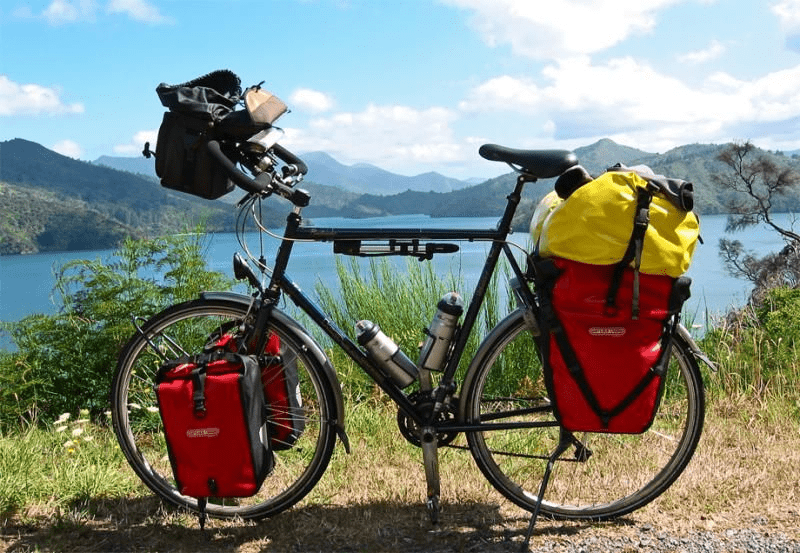
Frame
Road bikes and tour bikes are pretty different when it comes to their frame. The frame of a tour bike is carved out of heavy-duty steel, which promises durability. It is meant to last and provide stability. Since a touring bike allows you to carry your essentials along, it needs to possess a reliable frame.
Such strength and durability are made possible due to steel. Surprisingly, a steel frame also happens to come with an affordable price tag. It will also be easy for you or a mechanic to weld it. A few tour bikes can also be aluminum-framed, but steel is one of the most preferable touring bike frames due to several reasons, including the fact that it efficiently absorbs the bumps and vibrations on the road.
However, it makes the frame of a touring bike much heavier than a road bike, whose frame is mostly built of carbon fiber. It could be a little more expensive than steel, but it brings down the overall weight of a road bike and gives it a sleek structure that is super light.
The steel frame of a road bike is easier to repair, but a carbon-framed road bike can also be molded into different shapes. Not to forget, its frame is corrosion-resistant. A carbon fiber frame will not match the durability of that built of steel, but it will definitely enhance your performance.
Wheelbase
A noticeable distinction between both bikes is the size of their wheelbase. It even affects how comfortable your ride will be. Tour bikes already have the edge over road bikes when it comes to comfort. The size of the wheelbase remains in their favor as it enhances comfort while riding touring bikes.
Touring bikes are equipped with a longer wheelbase as their rear axle is located at the back. Even though it increases your comfort, you may not find it as responsive as in the case of road bikes. It will also prevent you from taking tight turns while riding.
This is because of the shorter distance between the axles of a road bike which enables it to have a relatively shorter wheelbase. Even so, a short wheelbase allows a road bike to be more responsive to you and promises maneuverability.
This difference is also due to the distinct purposes these bikes are meant to serve. A longer wheelbase allows a touring bike to provide more attachment points for accessories. Such a benefit is not required in road bikes as they are not meant to be taken on long trips with heavy loads and luggage.
Tires
Road bikes are fitted with slimline tires with a few grooves on their surface. They are narrow and not as treaded as wide tires meant for off-road riding. Due to this, they do not grip the road while riding. This makes them unsuitable for tough terrains but enhances their speed on pavements.
You will find wider tires with treads in a touring bike. Since all-day adventures may include rough trails, the tires of a touring bike need to be able to retain a firm grip over these trails. Thick, durable tires ensure less rolling resistance, and you are able to go over dirt and gravel effortlessly.
Your trails may or may not include uneven surfaces. Even on smoother terrains, the thick tires of touring bikes work well, as your heavy luggage requires some support while traveling. A long trip where you are carrying loads and luggage cannot be made possible with slick road bike tires, even if you ride on bump-free terrains.
The tires of a touring bike offer great support while being puncture-resistant and running on low tire pressure. However, if your purpose is to commute casually or reach a destination as quickly as possible, you should prefer the skinny tires of a road bike as they promise speed and agility.
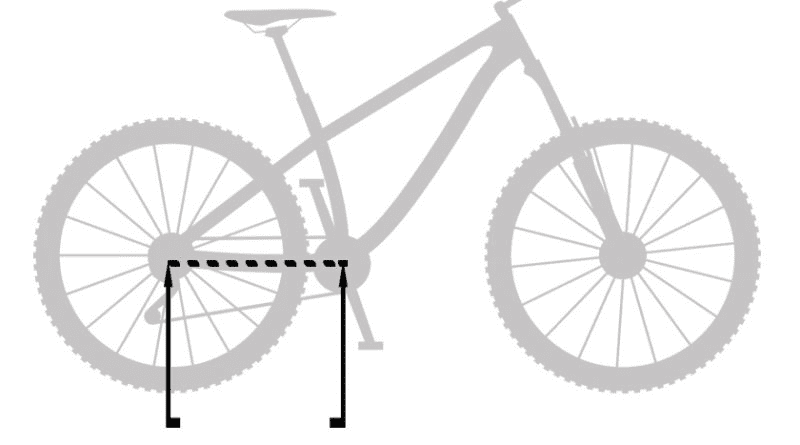
Chainstay
Just like the wheelbase, the chainstay of a touring bike is also longer than that of a road bike. The chainstay is the distance between your bike’s seat tube and both of its wheels. Since it is located next to the chain, it is called a chainstay.
A shorter chainstay allows for a desirable center of gravity as compared to a longer chainstay. Due to this, traveling or climbing uphills will not be an issue when you are riding a road bike. You will also get to make crisp turns because of a shorter chainstay on road bikes.
The same cannot be possible for a touring bike, but it fulfills its purpose with a longer chainstay. It enables the rider to carry luggage while taking all-day trips, which is one of the most essential features of a touring bike. If tour bikes had a shorter chainstay, your feet would hit against your own luggage while riding as your rear wheel will be closer.
Weight and speed
It is evident from the material of the bike frames that road bikes tend to be lighter in weight. This is because they are mostly built of a carbon fiber frame which could be a little more expensive, but it enables them to have a very light structure that is easy to handle.
In contrast, touring bikes are carved out of a heavy-duty steel or aluminum frame, adding to their overall weight. This is only exasperated by the wide-treaded tires they are equipped with. A heavy and durable frame is essential for the purpose tour bikes are supposed to fulfill, but it doubtlessly makes them much heavier than road bikes.
Even so, their heavy weight is justified by the rugged terrains they are supposed to travel on. A fragile bike with slick tires is clearly unsuitable for such terrains. Since road bikes have narrow tires coupled with a compact frame, they are not only light in weight but are also excellent when it comes to maximizing speed.
They do a commendable job on paved roads, the sort of surfaces they are meant for. Their speed and agility are boosted by the aerodynamic riding position offered by their drop bars and frame geometry.
Riding a road bike will require you to lean forward as such a posture enhances your speed and allows you to cover distances quickly. Evidently, touring bikes are the complete opposite when it comes to speed.
Due to their heavy weight and riding posture, they only focus on endurance and covering more distance while pedaling for longer hours. In this process, they compromise with speed but excel in comfort as their upright posture allows you to ride comfortably.
Handlebars
You will find drop handlebars in road bikes with integrated gear shifters and brake levers. They offer three prominent hand positions to the rider. The most commonly used position is the ‘hoods.’ A road biker can also climb with ‘tops’ and sprint or descend with ‘drops.’
Drop bars enable the riders to bend forward while riding to enhance speed and agility. However, since this front-leaning posture arches your back, you may find it uncomfortable for long hours of cycling.
Most touring bikes, on the other hand, offer a relaxed frame geometry even with the drop handlebars or other handlebars, including trekking bars, whatever they are fitted with. They are flared and possess a wide width. You will enjoy a comfortable upright seating position that will not compel you to bend downwards.
Such handlebars are essential in a touring bike due to the high level of comfort a biker will expect on longer rides. These handlebars are comfortable, but they are one of the reasons behind the compromised speed of a touring bike.
Tourist bikes are not equipped with a single style of handlebars. You will find all kinds of handlebars, from drop bars, butterfly handlebars, and trekking handlebars to flared bars. Even flat bars are widely popular in tour bikes for novice riders. Choosing a specific bike or set of handlebars totally depends upon your priorities.
Purpose
The purpose behind the manufacturing of a road bike is to enhance the speed and performance of the rider. They are designed to be ridden on paved city roads or other smooth surfaces. Their lightweight frame and slimline tires enable high speed and efficiency.
Their drop handlebars are designed to allow you to lean forward while riding. Some road bikes are also built as racing bikes for competitive events. Tour bikes, on the other hand, are well-engineered bikes built for the purpose of touring and all-day adventures.
Their sturdy frame can withstand rugged terrains and carry the luggage you may need for long trips. Instead of speed, these bikes intend to focus on endurance and rider comfort. The purpose of these bikes is one of the main distinctions between them.
Additional accessories
A noticeable advantage of touring bikes is the space they provide for your belongings. This also happens to be a considerable difference between road bikes and tour bikes. Since tour bikes are meant for long journeys and trips, they let you store essentials like water bottles, bags, luggage racks, and other luggage of yours.
You will be able to find these mounts on the bike’s frame, seat, and even the fork. They offer as many as three mounting points. You will also find them on the front and rear racks. On the contrary, road bikes do not offer such convenience as their purpose differs from tour bikes. They are supposed to excel in speed by maintaining a lightweight. You will only find limited space and attachment points for additional accessories and luggage.
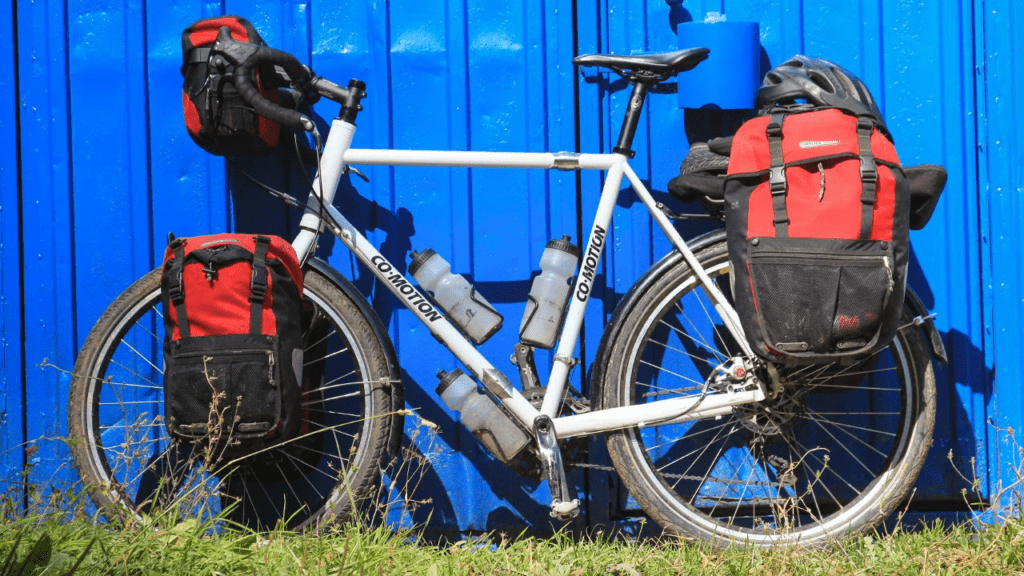
Brakes
Touring bikes are equipped with disc brakes for efficient stopping power and a smooth halt. Even road bikes are fitted with disc brakes for better performance. However, old models of road bikes will have rim brakes which are less efficient on wet surfaces.
Although these rim brakes do not perform as well as compared to disc brakes, they are much more affordable and light in weight. It is also easier to set these up than disc brakes. Even the old tour bikes will be found with cantilever rim brakes which do not demand a lot of maintenance.
The reason why newer bicycles are equipped with disc brakes is due to the versatility they offer. They promise efficiency in all kinds of terrains, including rough terrain, and weather conditions, ensuring safe rides.
Gear shifters
The gearing system of road bikes and tour bikes is very similar. They are mostly fitted with a 2x setup with two front chainrings. Due to the relatively heavier weight of a touring bike, it comprises the speed. Therefore, to climb efficiently, many touring bikes prefer a compact crankset and speed transmission system.
The low gearing-in tour bikes allow you to move uphill effortlessly. Some tour bikes may also have a 3x setup and friction shifters. You will either spot these on the ends of the handlebars or the stem. These provide a fluid movement and are pretty easy to maintain. Not to forget, you can quickly get them repaired without much hassle.
However, to work with these gear shifters, you are required to pull the lever for as long as the chain shifts. Road bikes, on the other hand, mostly offer index shifting. With just a click of your fist, you can shift the gears of your bike. Moreover, you barely feel like you are pedaling due to the wider gear range offered by them.
Pros & Cons of a touring bike
Pros & Cons of a road bike
Which One Is Better – Touring Bike Vs Road Bike
Tour bikes and road bikes happen to be two of the most popular bikes you consider before buying a new one. Just on the basis of parameters, it is not justified to decide which bike is better. This is because different parameters could be perceived differently by bikers on the basis of their riding preferences and choices.
If your purpose is to make your bike attain high speeds and quickly travel over paved roads, all the features of a road bike will suit your needs better. On the contrary, if you wish to take up long trips with hauling capability and comfort, you should undeniably go for a touring bike as it satisfies your prime utility.
The title of a better bike can only be given to the bike that fits your individual needs perfectly. Therefore, choosing between one of these bikes will highly depend upon what you prioritize.
FAQs
Can I use a road bike as a touring bike?
You should only use your road bike as a touring bike if your terrains do not include rugged and rocky surfaces. The slick and barely treaded tires of a road bike cannot grip over such surfaces and are unsuitable.
They are also more likely to puncture because of how thin they are. However, if your tours are limited to paved paths and city roads, you can easily use a road bike as a touring bike. But you must know the limited hauling options they provide as compared to tour bikes.
Can a touring bike be used off-road?
Yes, you can easily go for off-road riding with touring bikes as their wide tires are fit for rough and rugged terrains. They are treaded and ensure a strong grip even over the roughest surfaces.
You can even cover concrete-based terrains or uneven terrain as the thick tires are puncture-resistant. Moreover, touring bikes are equipped with a heavy and durable frame which is perfect for an off-road experience.
What is considered a touring bike?
The bike specially designed for long journeys with a commendable hauling capacity is considered a touring bike. These bikes tend to provide comfort even when you are pedaling for hours and taking up multi-day trips. They are equipped with wide tires, which are pretty versatile. Such bikes lack the ability to attain high speeds but can help you cover larger distances.
Are touring bikes slow?
Touring bikes are much slower than road bikes. This is due to their heavy frame carved primarily out of steel or aluminum. Since it increases their weight, they become slower. Furthermore, tour bikes are fitted with thick wide tires which ensure a grip over the riding surface. Even their geometry and handlebars prevent an aerodynamic position, making them significantly slower.
Why are touring bikes so heavy?
Touring bikes are heavy due to their heavy-duty steel frame and wide treaded tires. A frame carved out of steel is much heavier than that built of carbon fiber. Such frames are undeniably stiff and durable, but they make the bike bulky. Even the thick tires of a touring bike are efficient on rough trails. They are puncture-resistant and durable. However, due to their bulky nature, they make touring bikes much heavier.




